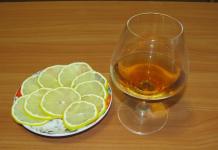Acrylic has been used in construction for a long time as a sealant-putty for floor coverings, paint, glue, putty, and decorative plaster. The scope of acrylic is regularly expanding.
One of the latest innovations is acrylic wallpaper. According to the manufacturers, they can replace foam vinyl wallpaper. Compared to vinyl, they have many advantages, which are expressed in high performance characteristics.
Acrylic wallpaper consists of a canvas with a paper base and a layer of foamed acrylic, which forms a pronounced relief pattern on the surface.
Acrylic paper wallpaper
Acrylic paper wallpaper is the most environmentally friendly subtype of acrylic wall covering. The disadvantage of this type manifests itself when gluing wallpaper: it cannot be soaked for a long time, otherwise, due to the moisture contained in the glue, the paper will become wet and the acrylic will suffer. Therefore, as soon as one canvas has been smeared, it must be immediately glued to the wall.

Acrylic paper wallpaper is available in regular rolls. Their outer surface has a relief structure. It can be plain or colored. Manufacturers offer a wide range so they can be easily selected for any interior.
Non-woven wallpaper is a subtype of acrylic wallpaper, but it has several nuances:
- The non-woven base is considered a good reinforcing layer. The wallpaper will not tear even if a crack forms in the plasterboard wall.
- Easy to stick. It is necessary to apply glue to a previously prepared surface and glue the wallpaper.
Eco-friendly wallpaper
In addition to standard wallpaper with a two-layer structure, manufacturers offer an improved variety called eco-acrylic. In these samples, instead of regular acrylic, an emulsion diluted in water, similar to medical acrylic, is used.
This coating consists of four layers. The first layer is the base, most of which is paper. The second is acrylic. The third and fourth are environmental acrylic, which is applied in two layers. Therefore, this type of wallpaper is more durable and safest.
Liquid acrylic wallpaper
Acrylic liquid wallpaper in its qualities belongs more to the types of decorative plaster than to wallpaper. This material consists of a mixture of silk, cellulose fibers and decorative fillers such as structural particles and dyes.

In order to make a liquid (hence the name) mixture, you need to use regular wallpaper glue. The resulting composition must be rubbed over the entire surface of the wall.

Before applying liquid wallpaper, experts advise treating the surface of the walls with a primer mixture. This will improve the adhesion of the base to further coating. The primer also has protective properties: it prevents the penetration of moisture, prevents the formation of fungus and mold.
Primer for liquid wallpaper
Basic primers for liquid wallpaper:
- Acrylic primer for wallpaper is the best option. Firstly, it is easy to apply. Secondly, it dries quickly. Thirdly, it lays down evenly.
- Deeply penetrating. It is perfectly absorbed into the surface, and after drying a strong, moisture-proof film is formed. This primer can smooth out surface imperfections: unevenness, pores.
- Quartz is made using quartz dust. This type of primer adds a slight roughness to the treated surface, allowing the liquid coating to adhere perfectly.
The value of liquid wallpaper is that it can be used on any surface. Buyers prefer this type, as it is no worse than regular wallpaper. The only drawback of this type of finishing is the cost of materials.
Wallpapering
Vinyl acrylic wallpaper is glued in the same way as regular paper wallpaper. First you need to prepare the walls: remove the old covering (wallpaper, plaster). Clean them from grease and dirt. Level the surface and apply primer.
The main thing is to choose the right adhesive composition. It is best to use glue designed for acrylic wallpaper.

The next point is smoothing. Almost all experts prefer to use a spatula. But it will have to be used very carefully, because the deeper the structure, the greater the likelihood of getting caught on it and ruining the wallpaper. If you have no experience working with a spatula, then it is better to use a roller.
It is better not to ventilate the room while wallpapering, since vinyl acrylic wallpaper does not tolerate temperature changes.
Gluing wallpaper with acrylic paint
Wallpapering paint is not an easy task that requires certain knowledge. If you glue wallpaper onto a painted surface, then in the future there may be problems with the wallpaper coming off the walls, the formation of air bubbles and unevenness. In this case, you will have to re-glue the walls in the near future.
Completely cleaning the surface of the old coating will take a lot of time, but this can guarantee you an excellent final result. Before gluing wallpaper over paint, it is recommended to apply a primer first. Acrylic paint is odorless, applies well and adheres to the surface, in addition, it is characterized by excellent water-repellent properties.
Paints for paper wallpaper
They differ from ordinary paper wallpapers by the presence of a water-repellent layer. The paint for this type of wallpaper is water-based. You can update the wallpaper for painting up to fifteen times.
The paint for paper wallpaper is made from PVA and is considered environmentally friendly. Its disadvantages are that it absorbs water, fades in the sun, and cannot be used in rooms with high humidity. for wallpaper it has good moisture resistance and is used only on smooth surfaces. It does not allow air to pass through.
Not long ago, a new method of wall decoration appeared - painting wallpaper with acrylic paints. Acrylic paints are most resistant to sunlight and moisture.

Manufacturers offer a varied palette of colors. If the wallpaper is painted with this paint, then you can wet clean the walls, which improves the air quality in the room. In addition, it does not have a negative impact on human health and for this reason can be used for interior decoration.
Paper wallpaper paint is sold in white. With the help of special fillers it can be given any shade. This process is called tinting. The desired color can be done manually or using special machines that quickly mix the paint to obtain the required color according to the buyer's order.
High-quality painting materials allow you to update your paper wallpaper yourself. This is much faster and more economical than removing old wallpaper and re-gluing new ones. Paint increases the strength of wallpaper and improves sound insulation of rooms.
Advantages and disadvantages of acrylic wallpaper
The main advantages include the following factors:
- Resistant to abrasion and mechanical damage.
- Wear resistance - wallpaper can be washed with detergents, but only without abrasive substances.
- The cost of producing acrylic wallpaper is much lower than producing vinyl.
- Environmental friendliness. Acrylic is one of the purest polymers; it does not release toxins and allows walls to “breathe”.
- Hygiene. Acrylic wallpapers prevent fungi and mold from multiplying, so they can be used in a child’s room or bedroom.
- Versatility. With the help of modern painting technologies, wallpaper can be painted in the color most suitable for the interior.
- Long service life.
Main disadvantages:
- wallpaper attracts dust due to its deep structure;
- instability to moisture, high humidity shortens the service life of wallpaper.
Caring for acrylic wallpaper
It is recommended to wash acrylic wallpaper from the bottom up, this makes it possible to avoid smudges and stains. It is not recommended to use strong chemicals. This leads to partial or complete loss of color. Cleaning should be done with a soft damp cloth.

Proper and timely care of acrylic wallpaper gives excellent results. After cleaning, they regain their original appearance. It is recommended to regularly wet clean the house, including the walls.
Acrylic wallpaper is an excellent replacement for traditional types of decoration. They help make the interior brighter and more expressive. If the interior design of the room is made in a classic style, then most often they choose wallpaper in the same color scheme as the entire room. In a modern style, bright, contrasting wallpaper without a pattern is used.
Acrylic wallpaper is a paper canvas with acrylic foam applied to it. They are an alternative to the generally recognized leader – vinyl. This is something between paper and vinyl wallpaper. This material appeared relatively recently, but has already been able to conquer its niche in the finishing materials market. Let's look at the pros and cons of acrylic wallpaper, features of care and gluing.
Acrylic wallpaper - pros and cons
First of all, such wallpaper is due to the price - it is significantly lower than vinyl. However, in fairness, it should be noted that the service life of acrylic wallpaper is also significantly lower compared to its direct competitors.
Many people credit acrylic wallpaper for the fact that they are able to allow air to pass through well, which means they are breathable. This is not entirely true. Indeed, they allow air to pass through, but only until you apply glue to them. After drying, the glue forms such a dense crust on the back of the wallpaper that there can be no talk of any “breathing”. Just a marketing ploy, nothing more.
Another weak point is the acrylic itself. The fact is that the acrylic pattern is not applied to the entire surface, like vinyl, but only in the places of the patterns. This makes the wallpaper more vulnerable to moisture and mechanical stress. Therefore, they cannot be used in rooms with high humidity. Cleaning should also be careful, but more on that below.  The advantages, in addition to the low price, include their higher strength compared to paper ones. In addition, they have a fairly wide selection of designs and colors, although they are inferior in this regard to vinyl ones. It should also be noted that due to the shallower depth of the pattern, they are lighter than vinyl ones, which will allow you to purchase cheaper glue. Due to its strength, such wallpaper can mask small irregularities on the walls, and the texture of the pattern will make them not noticeable at all.
The advantages, in addition to the low price, include their higher strength compared to paper ones. In addition, they have a fairly wide selection of designs and colors, although they are inferior in this regard to vinyl ones. It should also be noted that due to the shallower depth of the pattern, they are lighter than vinyl ones, which will allow you to purchase cheaper glue. Due to its strength, such wallpaper can mask small irregularities on the walls, and the texture of the pattern will make them not noticeable at all.
Acrylic wallpaper is made of polymer compounds, which eliminates the appearance and proliferation of various types of bacteria and microbes. This material is absolutely non-toxic and does not produce any emissions into the atmosphere. This is a very powerful argument for choosing a nursery, and in general, for people who care about their health. An interesting feature is that you can buy acrylic wallpapers with quite chic designs for the price of regular vinyl ones. But their competitors with a similar design will not be affordable for everyone.
In general, acrylic wallpapers occupy a worthy place among decorative materials, but there is also a flip side to the coin. Not all buyers can distinguish acrylic wallpaper from vinyl. Therefore, often, especially in markets, you can buy inexpensive vinyl ones, which actually turn out to be acrylic. As a rule, this is discovered during the first wash, when the pattern begins to deteriorate from moisture. To avoid becoming a victim of scammers, ask sellers for product quality certificates. Otherwise, acrylic wallpapers are worthy competitors to vinyl wallpapers and are head and shoulders above paper ones, being slightly inferior to the latter in price. These are the main pros and cons of acrylic wallpaper, let's now talk about caring for them. 
Cleaning acrylic wallpaper
Cleaning vinyl wallpaper is not at all difficult, although it has its own characteristics. It is forbidden to use abrasive substances, as they will irreversibly damage the fabric. You should not use detergents either. Cleaning is best done with a damp cloth or sponge. Take some container with clean water, soak a rag or sponge in it and squeeze it well (moistened with plenty of water can damage the wallpaper). Next, gently wipe the surface. After such simple cleaning, the wallpaper will again acquire its original appearance. 
Pasting acrylic wallpaper
At the next stage we prepare the canvases. We cut them according to the height of the walls, plus a few centimeters in reserve. We lay the cut sheets on a previously prepared solid base and apply glue. The adhesive can be used for both paper and vinyl wallpaper. The applied glue should be held for a while so that it is absorbed.
Now you can glue it. Most often, the “butt” method is used for stickers, less often the overlap method. Next, you need to carefully smooth out the glued sheets from the center to the edges. Before laying down the next sheet to be glued, be sure to wipe the surface of any glue remaining from the previous one. During the work and further drying of the glue, you should not ventilate the room, since this type of wallpaper does not tolerate temperature changes.
We have reviewed the main ones, you can read about other types here -.
You may also be interested in:

Paper wallpaper is one of the most difficult materials to work with. High-quality stickers require considerable experience. This is explained by the fact that paper wallpaper “reveals” all the flaws in the preparation of the walls and loses its strength when wet. In addition, wet paper loses its linear dimensions. Therefore, it is important to follow the instructions for preparing the glue and dose the amount very accurately.
FIRST OF ALL: Before starting work, make sure that the installation instructions are completely clear. Make sure that the article number of the wallpaper you receive matches the one you ordered and that the batch number matches on all rolls.
BEFORE CUTTING THE CLOTHS Check the wallpaper carefully for quantity and quality. All non-conformities must be identified before work begins. Claims regarding differences in shades or differences in article numbers of the materials received after cutting the rolls into strips not accepted. If a defect is discovered, you should immediately stop working and contact the supplier. Claims for defects after wallpapering are not accepted. Pasting the wallpaper confirms that the goods have been accepted.
1. SURFACE PREPARATION:
The surface of the wall must be smooth, clean, dry, free from dirt and dust. The surface should not be varnished, have areas that do not absorb moisture, or have greasy stains. Painted surfaces should be washed to remove dirt and salt stains or deposits. Surfaces painted with oil paints should be sanded. You cannot paste over surfaces covered with fresh plaster without first drying and priming.
To make sure that the wall surface is ready for wallpapering, you can carry out a test: run your hand along the wall, there should be no chalk or other foreign particles left on your palm. Place a piece of plastic film of any size on the wall, securing it with tape on four sides. If after 24 hours no condensation has accumulated under the film, then the surface is ready for gluing. In Russian climatic conditions (strong temperature changes when changing seasons), for better fixation of the wallpaper, we recommend additionally applying paper wallpaper glue or universal glue to the wall surface (as a primer).
2. PREPARATION OF STRIPS:
Cut 3 strips from the first roll according to the height of the ceiling in the room, taking into account the adjustment of the pattern and an allowance of 5-10 cm. to each lane. The allowance is necessary to align the edges of the wallpaper along the ceiling and floor. For pattern-matched wall coverings, match the next strip of wallpaper with the previous strip (already cut) until the pattern matches exactly. Do not cut the next strip until you have this confident match. Label each cut strip pencil on the reverse side in order. The strips must be glued strictly according to the markings.
3. DIRECTION OF STICKING THE STRIPES: Some types of wallpaper are sometimes applied using the reverse method (counter sticker). For European wallpapers this is indicated by the icon:
4. TRANSLATION OF MARKINGS ON WALLPAPER MADE IN THE USA:
DROP MATCH- when adjusting, the second wallpaper sheet is shifted to the full height of the pattern.
HALF - DROP- when adjusting, the second wallpaper sheet is shifted by half the height of the pattern.
STRAIGHT MATCH- when adjusting, the second wallpaper sheet is shifted relative to the first one to the full height of the pattern with a flip.
STRAIGHT ACROSS- the same as STRAIGHT MATCH.
RANDOM MATCH- sticker without adjustment.
5. STICKER COATINGS:
Important! Following the instructions, stick no more than 3 strips of wallpaper and stop working until the wallpaper is completely dry (48 hours). After this, carefully examine the surface of the strips, the joints between the canvases and the combination of the pattern. If you are satisfied with the quality, continue working. Do not continue pasting the remaining rolls if you are not satisfied with the quality of the glued 3 strips. Retain the labels from all rolls until the repair is complete.
It is recommended to use cellulose-based glue (Kleo and similar). The glue must be diluted strictly in accordance with the instructions on the package (the amount of water is for light wallpaper). The wallpaper is covered with glue. Apply glue to the back of the wallpaper in the amount specified in the instructions. Make sure that the entire canvas is evenly covered with glue, especially the edges. Don't use a lot of glue, it's better to add it to the wall when gluing the strip. If there is excess glue, it will protrude at the joints and may end up on the front side, which should not be allowed.
After applying the glue to the canvas, you need to fold it with the glue inward and give the glue the opportunity to saturate the base material. This takes from 5 to 15 minutes depending on the type of wallpaper. You need to fold the strip as follows. Fold the top third of the strip to the center, fold the remaining 2/3 to the center so that the top and bottom edges of the strip touch. When folding wallpaper, avoid bending! When folding the strip, make sure that its edges lie flat. The glued strip should not be left for more than 20 minutes to prevent the glue from drying out.
Having pasted the top half of the wallpaper strip, begin to unfold and align the remaining lower part so that the previous strip meets the newly pasted one. Make sure the pattern fits together correctly. Gently smooth the canvas using a special roller or wallpaper brush (do not use a wallpaper spatula, you may damage the wet surface of the wallpaper) in order to eliminate any bubbles that have formed. This defect can be completely eliminated only immediately after gluing, in a very short period. The appearance of small bubbles under the wallpaper is normal; they will disappear as it dries. Try not to use force when smoothing the wallpaper, do not press hard on the surface, carefully smooth the canvas from top to bottom and from the middle to the edges, do not stretch the strips of wallpaper along the length and width. This can stretch the wallpaper, lead to inconsistencies in the pattern along the edges of the rolls, or the appearance of gaps between the strips after the glue has dried. Lightly press all seams using a seam roller. Repeat the procedure with the remaining strips of wallpaper.
Join the edges of the wallpaper together using a tapered seam roller to create good butt seams. The edges protruding from the top and bottom are trimmed using a knife and a metal spatula. When gluing, do not allow the glue to get on the surface of the wallpaper; stains are difficult to remove and their complete removal is not guaranteed. Remains of glue should be removed with a dry sponge, without rubbing the glue over the canvas. All exposed adhesive must be removed before the surface dries. When wallpapering, avoid drafts in the room.
Periodically check the already applied strips for air bubbles. Remove large bubbles as described above. Small bubbles can be removed by carefully pricking them with a thin needle and squeezing the air out of them.
5. CURB STICKER:
The manufacturer recommends pasting the wallpaper first. It is preferable to glue borders after the main coatings have dried. Drying time depends on the air temperature and humidity in the room. To apply borders, use special border adhesive. The glue is applied to the back side of the border.
ATTENTION!
Don't use too much glue.
Do not allow glue to come into contact with the surface of the material.
IMPORTANT!
Previously, apartment walls were covered only with paper wallpaper. However, a different time has come, and spectacular new products have appeared on the market. People actively began to cover their rooms with vinyl, non-woven, washable wallpaper, photo wallpaper, glass wallpaper, and silk-screen printing. And no one even had any idea that some materials could be harmful. Gradually, the excitement died down and many began to become interested in the safety of these luxurious materials. Three types of wallpaper attracted particular attention: non-woven, vinyl and acrylic.
What is non-woven wallpaper?
Non-woven fabric is a non-woven material consisting of two types of fibers (textile and cellulose) that are interconnected. These fibers are held in place by polymers. This material can be found everywhere:

From this we can conclude that non-woven wallpaper and harm are two incompatible concepts.
Harm from non-woven wallpaper
So why are many people sure that non-woven wallpaper is harmful? If these are high-quality products, then they cannot cause harm. However, many manufacturers, in order to be competitive in the market for these materials and at the same time make their products cheaper, resort to various tricks. Vinyl wallpapers were created on a non-woven basis, which began to be considered non-woven.
However, it is vinyl that is extremely dangerous to human health. During combustion, formaldehyde is released from it, which penetrates the human body and, as a result of a reaction with the blood, causes irreversible harm to organs. Organs that are destroyed by formaldehyde include:
- central nervous system;
- respiratory tract;
- pathological changes in genetic material;
- skin;
- reproductive organs.

If formaldehyde is taken orally in an amount of 70-90 ml, death occurs.
The glue used to glue non-woven rolls is also quite dangerous. You may be allergic to it. Therefore, it is very important to choose the glue correctly, read the instructions, and understand who makes it. After completing the repairs, it is necessary to thoroughly ventilate the room and only then begin to inhabit it.
You need to choose wallpaper very carefully. Many well-known manufacturers do not want to spoil their reputation by producing low-quality products. Before purchasing this material, you should ask the seller to show a certificate of conformity and a sanitary-epidemiological certificate for the purchased product. If the seller is conscientious, he will provide these documents.
It is necessary to pay attention to the texture of the material. Real non-woven wallpaper has a dense and hard texture. But on a fake it is soft and easily damaged by a fingernail.
In addition, non-woven wallpaper, due to its textured surface, can accumulate dust, as a result of which people suffering from asthma, allergies or respiratory diseases begin to experience discomfort. Therefore, the room should be wet cleaned more often.
Also, when choosing rolls for gluing a room, you should pay attention to such characteristics as breathability. If this property is absent, then a fungus that is dangerous to health may appear.
Damage from vinyl wallpaper
 Are vinyl wallpapers harmful? Unfortunately, yes. At first glance, they are an excellent alternative to natural expensive materials. They do not fade under sunlight, are durable, the surface can be washed, and they hide wall unevenness very well.
Are vinyl wallpapers harmful? Unfortunately, yes. At first glance, they are an excellent alternative to natural expensive materials. They do not fade under sunlight, are durable, the surface can be washed, and they hide wall unevenness very well.
However, the paint used to coat vinyl rolls contains zinc and copper compounds, which begin to release in the apartment. Moreover, the thicker the vinyl layer, the later the release of these harmful substances occurs. If you sniff the rolls, you can smell turpentine and acetone. This is a clear sign of low-quality products.
You should also pay attention to whether the rolls have special marks, for example, an environmental safety mark. This means that you can use such wallpaper without harm to your health. In addition, they must have micropores, which means air access.
Vinyl wallpaper is considered a fire hazard and can ignite at temperatures of 160-200 degrees. During the combustion process, vinyl releases hydrogen chloride, which, when inhaled, forms hydrochloric acid in the respiratory system, which is incompatible with life. Experts strongly recommend refusing to use vinyl wallpaper, because in addition to hydrogen chlorine, when it burns, the following are released:
- carbon dioxide;
- cyanide compounds;
- carbon monoxide and some other dangerous substances.
Are acrylic wallpapers harmful?
 Acrylic wallpaper is an analogue of vinyl wallpaper, only acrylic coating is used instead of vinyl. They are a material consisting of two layers, the basis of which is thick paper. A relief of acrylic paint is applied on top of it.
Acrylic wallpaper is an analogue of vinyl wallpaper, only acrylic coating is used instead of vinyl. They are a material consisting of two layers, the basis of which is thick paper. A relief of acrylic paint is applied on top of it.
Acrylic is an artificial compound that is obtained by the polymerization of acrylic acids. Based on the obtained substances, varnishes and paints are made. They are easy to dilute with water and when dry, a thin and fairly durable waterproof film is formed.
Acrylates, unlike benzoates, do not cause any harm to human health. After drying, acrylic paint does not emit any harmful substances, even if the room temperature is high. It doesn't smell, which means there's no fumes.
Thus, when making your choice between wallpapers with different coatings, you should choose acrylic wallpaper. They are safe, so you don’t have to worry about them being harmful.
Acrylic wallpaper can be glued with both universal and special glue. If you have chosen only acrylic wallpaper for the entire room, then it is better to use a special glue that takes into account the weight, material and required composition. As a rule, wallpaper manufacturers write what components should be contained in the adhesive for better adhesion.
This type of wallpaper does not like moisture; to avoid mold and mildew, the adhesive you choose must contain starch and antimicrobial additives.
By choosing special wallpaper, the buyer receives a number of advantages:
The glue is easy to dilute in water, the formation of lumps is excluded, long-term storage in diluted form (more than 10 days);
Thanks to the sliding layer, when applied, the wallpaper fits well and is leveled;
This glue is completely invisible under the wallpaper;
It is environmentally friendly and safe for human health, as it does not emit harmful substances;
Quite a long shelf life (can be stored in packaging for more than three years).
Acrylic wallpaper does not like wet rooms, and no matter what glue is used, it will not stick in the kitchen, bathroom or other rooms with high humidity.
Wallpapering
The technology for gluing acrylic wallpaper is not much different from the technology for other types of wallpaper.
The first step is surface preparation. The walls must be cleaned of old paint, plaster, and wallpaper. The walls are cleaned of dust and dirt, then the surface is degreased. For leveling, putty is used, after which the wall must be coated with a primer.
The second stage is preparing the glue. To calculate the amount of glue for all walls, it is enough to study the packaging, which must indicate the consumption.
To dissolve the glue, follow the instructions: add the dry mixture gradually and stir, then the resulting mass will be homogeneous.
The next step is to cut a piece of wallpaper. Add approximately 5 centimeters to the measured length for a better fit. The canvas is placed on a horizontal hard surface, treated with glue, in this state it is necessary to leave the wallpaper for a few minutes so that the glue is slightly absorbed.
Acrylic wallpaper can be glued using the “butt” and “overlapping” method. Smooth them out from the center to the edges. Do not ventilate the room until the wallpaper is completely dry; acrylic wallpaper cannot withstand temperature changes.
If you choose the right glue and follow the wallpaper gluing technology, your walls will withstand great tests and will please the eye for a long time.


















